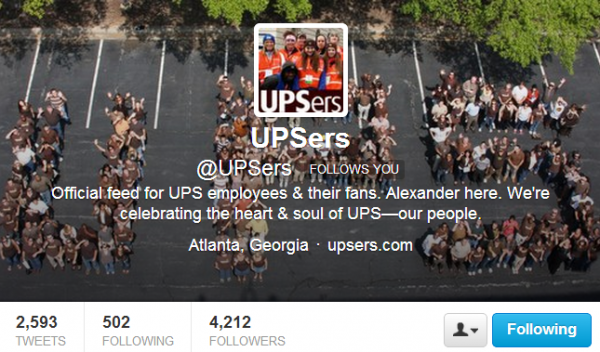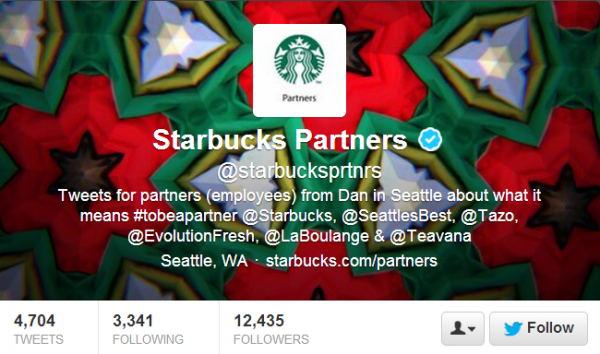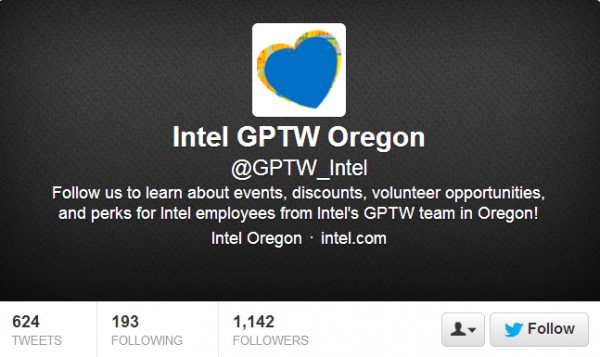Not too long ago, internal communications were seen as just that – internal. Some companies still think this way. They aim to “protect” the messages they share with employees. However, many companies are starting to understand that most of their employee communications were never truly secure or private. That printed newsletter you create? It can leave the building. The internal email? It can be easily forwarded.
This isn’t a discussion about security. The main idea is that for most internal messages intended for employees, it’s fine if the public (or even better, customers) are aware of them. One of the best ways to engage employees with information in their daily routines? Twitter.
In October, Twitter shared that it has 215 million active monthly users and 100 million active daily users. In the grand scheme of numbers, this isn’t a lot of people. But the number does keep growing each quarter – not just the number of users but active users. That’s the key. The next time you poll your employees or solicit feedback from them about internal communications, ask them if they’d follow a Twitter account for internal company updates and news. The results would be interesting.
Just like Twitter isn’t right for everybody, I’ll be the first to admit that using Twitter as a digital internal communications tool is not going to be for every company. But here are some tips on how your company can successfully use Twitter to engage employees on a local or global basis. Here are a few tips and examples of how a few well-known companies are using Twitter to engage employees.
1. Celebrate

This is what I love about UPS. Here is a company that has been around since 1907 and they are using Twitter (@UPSers) to celebrate company and employee successes. Employee recognition is pretty simple actually.
- It’s best to recognize employees for exhibiting the right behavior and attitude (not just tenure.
- Employee recognition should also be easy and frequent.
- Recognition should aligned with company goals.
- And then share these stories.
This is exactly how UPS takes advantage of Twitter. Also think about UPS, its workforce and global footprint. They have a vast majority of employees who are in distribution facilities and out on the roads delivering packages. If they choose, employees can look at the feed at their leisure. UPS isn’t relying on Twitter to deliver crucial or vital employee communication messages, but @UPSers is reinforcing the corporate mission.
You’ll notice in the Twitter bio that the account is isn’t ONLY for UPS employees, but also fans (which includes family members). So it’s also a way for them to follow along to employee successes. And in checking out the feed, employees are sharing information and pictures directly with the account, which @UPSers is smartly retweeting.
Congrats! RT @ChesapeakUPSers: Congrats to #UPSer Karen Chan who just crossed the finish line at the #phillymarathon pic.twitter.com/cPixd9zW5C”
— UPSers (@UPSers) November 17, 2013
2. Engage

For anybody who is active on Twitter, they are well aware of @Starbucks’ tweeting prowess and more than 5 million followers. It’s one of the most popular brands on Twitter. But what you may not know is that Starbucks is also using Twitter to engage its partners (retail store employees).
@Starbucksprtnrs launched in June of 2012 and has sent out nearly 5,000 Tweets since. And like @UPSers, Starbucks celebrates employee successes. But a slight difference here is that Starbucks is speaking directly to the partners. Though it’s public and anybody can see it, the messaging is targeted to employees.
It appears that Starbucks gives its partners special discounts this time of year so a lot of the Tweets focus in on that. But the account also has recently done a great thing by sharing how stores are decorating for the holidays. Without Twitter, there really isn’t an easy and frequent way to reach the retail partners.
Internal communications in retail is very tricky. You have a workforce without traditional “desktop” access to communications and typically deal with a higher turnover rate than other markets. I imagine other retailers will be jumping on this Twitter bandwagon.
Great sign! “@Sdropp39: Holiday is here in new york and at 87th and Lexington. #starbuckspartners #tobeapartner pic.twitter.com/fJqP2sMTKp”
— Starbucks Partners (@starbucksprtnrs) November 16, 2013
3. Localize
The first two examples were representative of large global brands reaching out to a worldly workforce. And Twitter has this reach. But here is an idea how Intel is taking advantage of Twitter for internal communications by targeting a local office.
The @gptw_intel account is run by human resources and is targeted just to those Intel employees located in Oregon. No company news is being shared on the account. Twitter is a channel for them to promote volunteerism and distribute extra tickets to local events. For anyone who has worked at a large corporation, you know how often you’ll hear a “what do we do with these extra tickets” comment. Well, Intel is using Twitter to distribute these and employees love it.
Checking out the feed, employees are attending concerts, sporting events and movie premieres. But better yet, not only are the employees attending, but they are saying thank you and sharing pictures. If your company wants to dip its toe in the Twitter pool, this is an easy and smart way to start.
Split loyalties tonight. PDX vs. CHI. Thanks for the tickets @GPTW_Intel pic.twitter.com/X624WKeb4H
— Rebecca Nevin (@RLNevin) November 23, 2013
4. Public or private
If you’ve made it this far and you believe Twitter is a viable internal communication vehicle, the next decision you’ll need to make is whether or not you want your account’s tweets to be public or protected (private). This is a simple security setting but that’s where the simplicity ends. The benefits of a public account is that you can draw in followers by your content being seen ahead of them following and there’s no administrative burden on managing the account. The benefits of a protected account is that you get to choose (accept) who your followers are but you do need to manually approve or deny followers.
I know of a few companies who are using Twitter for internal communications behind protected accounts. And to respect their privacy, I’ll refrain from mentioning their names and accounts. But they have chosen to be protected at the beginning just to make sure Twitter is where they want to invest the time. Validating whether or not a Twitter user is an employee or not could be a tricky task but there could be procedures around it (i.e. send us a Tweet with your employee ID or make sure you have a clear picture/name, etc).
I think a protected account limits the reach and exposure BUT it could build a sense of security for those starting out.
REQUEST: If you are aware of other companies (whether it’s yours or one you know about), I’d love to see other examples. Feel free to add them to the comments section. It would be great to have a list so that other communicators can witness the successes and lessons learned.
